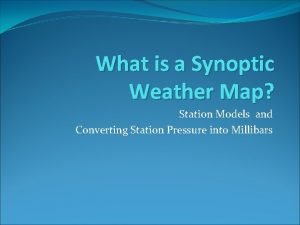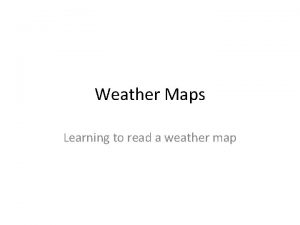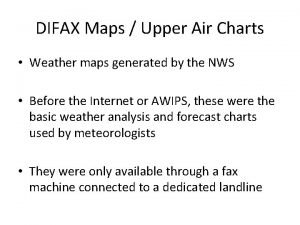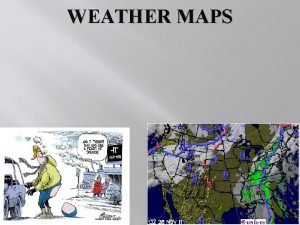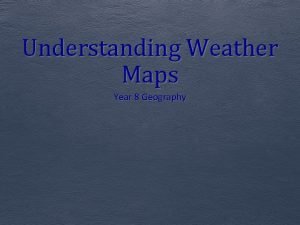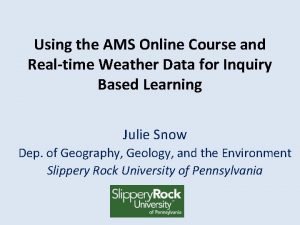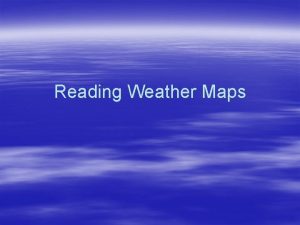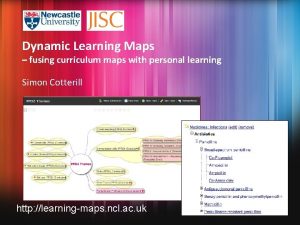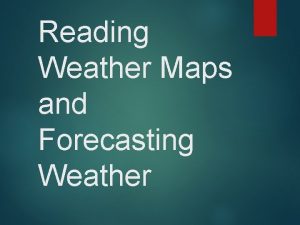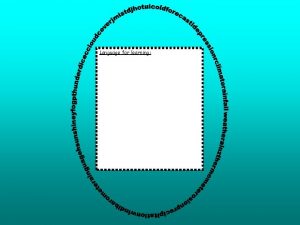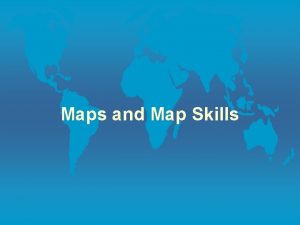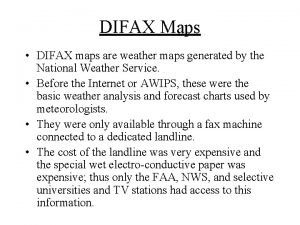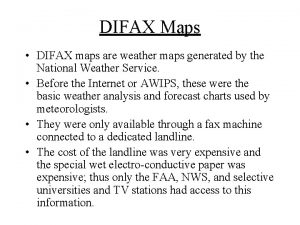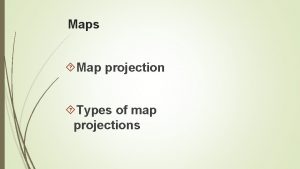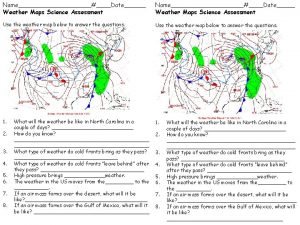Weather Maps Learning to read a weather map









- Slides: 9

Weather Maps Learning to read a weather map

Satellite maps • MAP: United States satellite picture • BACKGROUND: Satellites give bird's-eye view of clouds • What do satellite images show? Why is this information important? • How do we get satellite images? How do satellites travel? • What can meteorologists learn by the shade of the clouds on a satellite image?

Radar maps • • • MAP: North America Radar Image BACKGROUND: Understanding weather radar What does radar show? How do you use the map key on a radar map? How do we get radar images? What are some of the limitations of radar maps?

Precipitation maps • MAP: Precipitation • BACKGROUND: Precipitation: hail, rain, freezing rain, sleet and snow. Precipitation definitions • What is precipitation? • What are some examples of precipitation? • Define the different types of precipitation on the map. • What causes different types of precipitation?

Temperature maps • MAPS: North America Temperature Forecast U. S. Current Temperatures • BACKGROUND: More to temperature than you might think • What is temperature? (For the clearest definition, see the “Weather terms” chart in the background article. ) • What are the two most important factors in temperature? • Why is it usually cooler at night? • Why does temperature change during the seasons?

Wind-speed maps • MAP: Current Winds • BACKGROUND: Pressure differences give wind its push • Explain the main cause of winds. • Why are some winds stronger than others? • How does wind affect the weather? • How are winds named?

Front maps • MAP: Current Surface • BACKGROUND: This morning's storms, fronts map • What is a low-pressure system? What is a highpressure system? What kind of weather does each typically bring? • What is a cold front? What is a warm front? What types of weather does each typically bring? • Explain how the map key shows each of the terms above.

Other helpful sites: • Weather Basics • Meteorology A to Z • NWS

Rubric 3 Points 2 Points 1 Points Research Strong research skills On grade level Weak research skills Map and Information Developed a creative and innovative way to present information Developed competent ways to present information Did not complete the display Participation Actively participated Somewhat engaged Was not engaged in

